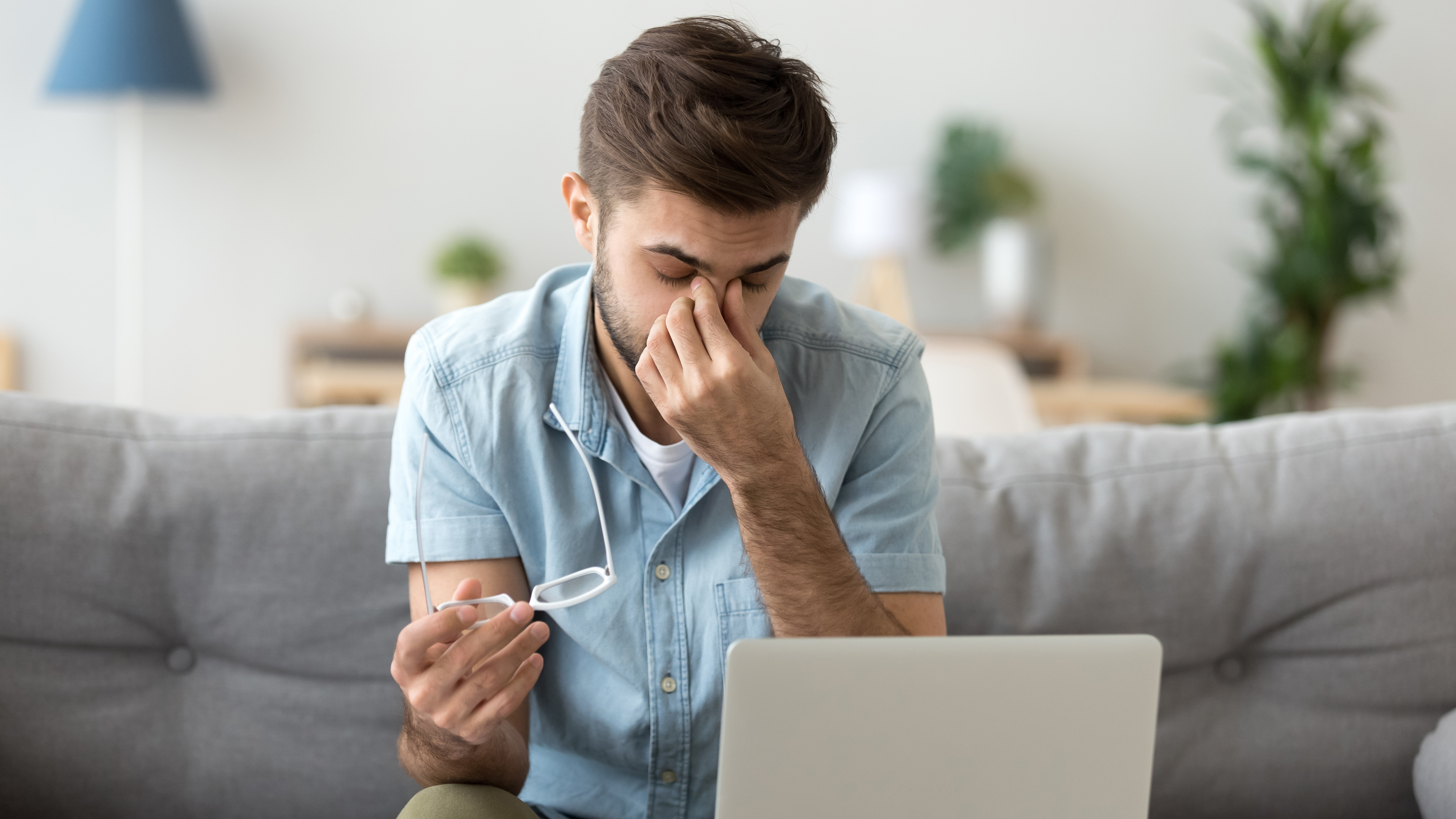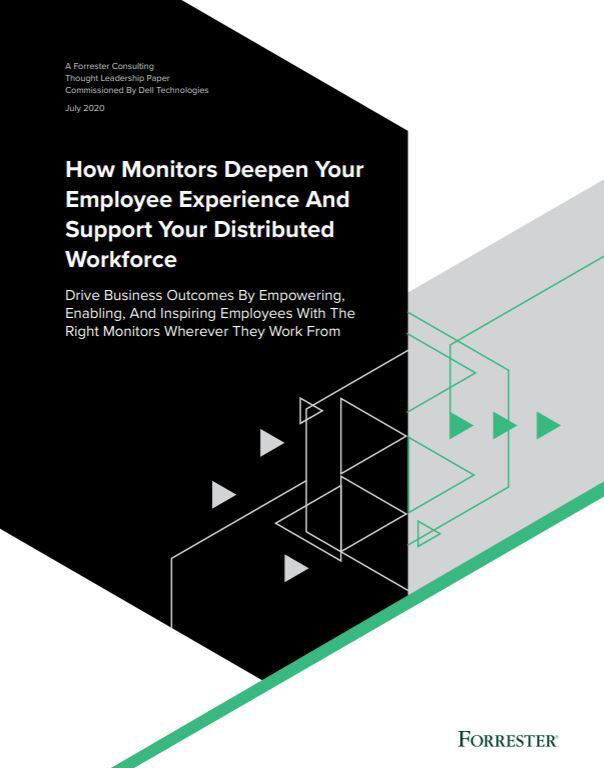Eight tips for reducing screen fatigue while working from home
We should be wary of burning out while relying on screens for almost everything, from meetings to virtual pub trips


The ongoing COVID-19 pandemic has changed our work and personal lives with one indirect consequence being a much greater reliance on using screens.
Gone are the days when we could break away from our computers with post-work pub trips, theatre visits, or meals out. Work events and conferences, too, once provided a much-needed respite from staring at displays all day, while meetings could be conducted device-free and in-person. Due to ongoing lockdown measures, however, we’ve come to rely on screens more than ever; not just for work, but to keep our social lives going, too.
That technology lets us communicate with family, friends and colleagues is fantastic, but the constant screen exposure may lead to repercussions. It's all too tempting to wrap up work on your laptop, then quickly browse your smartphone before jumping on a social Zoom call or start bingeing the latest Netflix series. All this screen time can quickly lead to burnout, eye strain and increased tiredness. Plus, there are further associated health issues such as repetitive strain injury (RSI) and circulatory and mobility problems from prolonged periods of inactivity.
We’re in this 'new normal' for the long haul, and whether you fear the prospect of burnout, or not, it’s important to take the right precautions so you can last through the remote working period without falling victim to screen fatigue.
Activate the blue-light filter on your device
A recent study from Vision Direct, which surveyed 2,000 adults in the UK and another 2,000 in the US, found that we averaged 4 hours and 54 minutes on a laptop before the pandemic and 5 hours and 10 minutes after. Furthermore, we spent 4 hours and 33 minutes on our smartphones before COVID-19, and 5 hours and 2 minutes after.
Our eyes are under more strain than ever before, and one of the simplest and most effective ways to immediately reduce this is by installing a filter that warms the tone of your screen display.
Although the eyes absorb blue light naturally, prolonged exposure from computer displays can lead to eye strain, according to Prevent Blindness. The consequences include irritation as well as difficulty focusing.
Get the ITPro daily newsletter
Sign up today and you will receive a free copy of our Future Focus 2025 report - the leading guidance on AI, cybersecurity and other IT challenges as per 700+ senior executives
There are a number of free tools out there, including f.lux and the open-source Lightbulb, which users can download immediately to tweak the tones on their displays. macOS and Windows 10 users can also opt to make use of night-time filters bundled into their operating systems. These can be found under display settings in each OS and can be activated throughout the day if needs be, not just at night.
Space out the working day, and take a longer lunch break
The luxury of working remotely means the daily commute has all but been eliminated. Why not use this extra time, therefore, to stretch out the working day a little either side to make way for frequent breaks, and a slightly longer lunch?
With the consent of your manager, and taking into account all meetings and commitments, extending working hours could give your eyes a much-needed break. Taking a longer, screen-free lunch can be the digital detox you need in the middle of the day to ensure you aren’t over-strained during the afternoon, as well as being fresher by the time you clock off.
There are several ways of going about this, but a straightforward template to follow is by working from 8:30am to 5:30pm instead of a usual normal nine-to-five. From there, you can either extend your lunch from an hour to two - or take 90 minutes and fit two shorter breaks into either half of your day.
Dust off your home printer-scanner
For those whose jobs involve reading or note-taking, printing out hard copies of files or documents may be the best way to steal valuable screen-free moments over the course of each working day.
Printing out documents and reading them away from the glare of a monitor is one major change you can implement to ensure you avoid prolonged exposure to computer displays. Whether you’re proofing documents, reading letters or annotating work, all these tasks can, hardware permitting, be performed away from a computer.
This piece of advice may not be for everyone, however; if you’re concerned about wasting reams of paper on a day-to-day basis, for example, or don’t have the right equipment at home you may want to stick with using your computer. You may also be deterred by the cost of replenishing printer ink on a regular basis.
Invest in a specialist monitor
With offices expected to be closed for several months, purchasing a specialist computer monitor may be a worthwhile investment. This is particularly effective if you’re prone to suffering from eye strain, and a mere blue-light filter won’t cut it.
There are several fantastic options out there, including the 27in NEC MultiSync EA271U which includes an ambient light sensor and low blue light levels. A host of manufacturers, however, not just NEC, sell displays built with features designed to combat eye strain, including ASUS, BenQ, Dell, ViewSonic and others.
RELATED RESOURCE

How monitors deepen your employee experience and support your distributed workforce
Drive business outcomes by empowering, enabling, and inspiring employees with the right monitors
The key lies in finding monitors with low blue light levels, high refresh rates, minimal to no display flickering, and high resolution and pixel per inch (PPI) count. It’s also important to consider whether the panel is anti-glare, and whether the monitor lets users fine-tune and adjust display settings to suit their needs.
Cut down on meetings and host more over the phone
Moving to remote working patterns for the foreseeable future has called into question the way we structure our days, and meetings haven’t been immune to this examination. They’re often essential and have continued running without much disruption thanks to a host of video conferencing services. But not all meetings need to be hosted this way.
It’s natural that we may want to catch up with our colleagues face-to-face as much as possible, given we’ve been separated entirely from each other. It’s worth considering whether all meetings are truly essential, however, and reducing or eliminating those that aren’t. For those that are unavoidable, why not consider doing them over the phone, saving everyone’s eyes?
Depending on your company's flexibility, it's also worth seeing if it's possible to implement an internal meeting blackout day each week. Jumping from one video call to another means you'll have less time to undertake work tasks and risk spilling over into evenings or weekends to complete them. Going dark for one day a week gives you time to get your head down and get to work. This is becoming increasingly popular, with companies like Channel 4 shutting off internal meetings once a week to combat burnout and aid productivity.
Don’t e-socialise straight after work
In the last few weeks we’ve been forced to find increasingly creative ways to stay in touch with our friends and loved ones – whether on Zoom or using HouseParty. One of the most pleasant surprises has also come by way of the virtual pub trip; something workers around the country, including the IT Pro team, have engaged with gleefully.
Just as you may wish to break up your working day, it’s important not to hop straight from work to online catchups, however. You should leave a little room for a break to reduce the strain on your eyes, perhaps by getting up for a short walk, making a snack, or catching up with the people you live with. Try to leave yourself a little breathing room in the schedule while organising your digital commitments to ensure you aren’t glued to your computer, tablet or smartphone all morning, afternoon, and evening.
Brighten up your working environment
There’s conflicting evidence as to whether staring at computer screens in the dark actually damages your eyesight. The consensus, however, does at least suggest it accelerates the process of your eyes tiring, and may lead to short-term strain.
Organising a makeshift office space, whether you’ve chosen your kitchen, living room, or bedroom, could be the key to maintaining continuity. Ensuring these spaces are well-lit is arguably more important when it comes to ensuring your eyes and mind can survive what may turn out to be an isolation marathon. In this spirit, it’s important to keep curtains open, switch lights on where necessary and invest in a desk lamp if needs be to improve lighting conditions.
Take up a new hobby
Besides saving time on travel, lockdown has freed up dozens of hours per week that would have otherwise been spent on going out or meeting up with people in-person. While this is the perfect time to catch up on boxsets, or the latest shows that have passed us by, it’s critical we don’t fill all these hours up with yet more screen-related activities.
It could be the best time to engage in a long-lost passion, learn how to cook, or take up more exercise. There are hundreds of activities you can take up now and then throughout the lockdown period to ensure you’re keeping yourself entertained while resting your eyes after a day locked to your computer. This may also help to more effectively maintain a work-life balance, with these lines threatening to blur very easily

Keumars Afifi-Sabet is a writer and editor that specialises in public sector, cyber security, and cloud computing. He first joined ITPro as a staff writer in April 2018 and eventually became its Features Editor. Although a regular contributor to other tech sites in the past, these days you will find Keumars on LiveScience, where he runs its Technology section.
-
 Should AI PCs be part of your next hardware refresh?
Should AI PCs be part of your next hardware refresh?AI PCs are fast becoming a business staple and a surefire way to future-proof your business
By Bobby Hellard Published
-
 Westcon-Comstor and Vectra AI launch brace of new channel initiatives
Westcon-Comstor and Vectra AI launch brace of new channel initiativesNews Westcon-Comstor and Vectra AI have announced the launch of two new channel growth initiatives focused on the managed security service provider (MSSP) space and AWS Marketplace.
By Daniel Todd Published